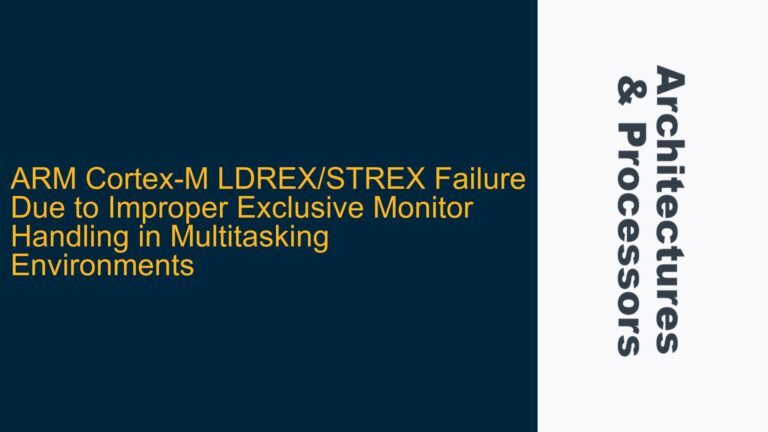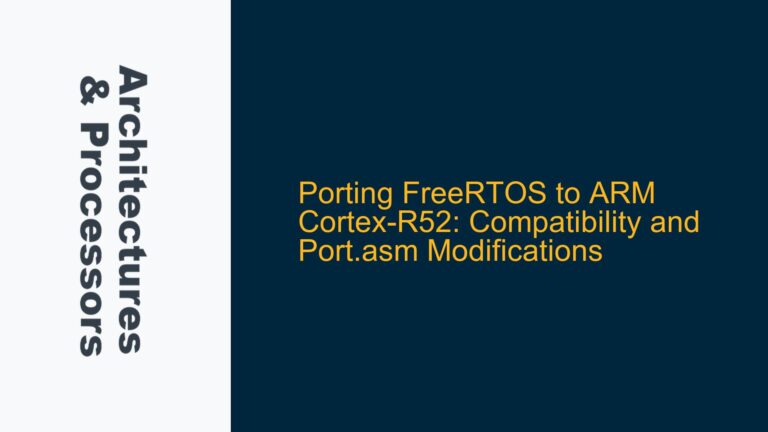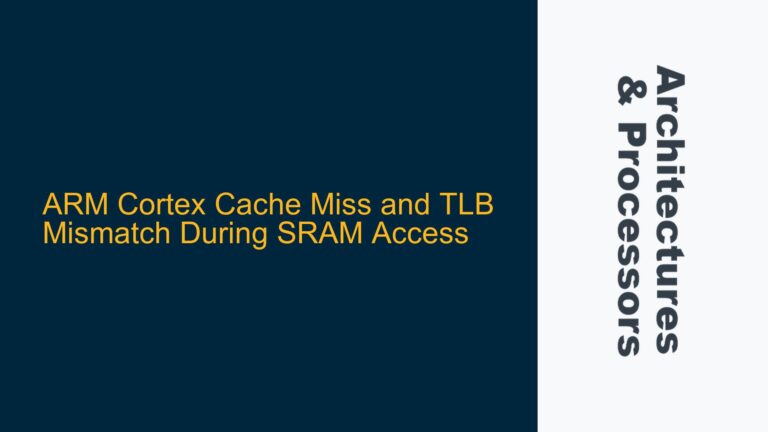Multi-Copy Atomicity in ARM Multiprocessing Systems
Multi-copy atomicity is a critical concept in ARM-based multiprocessing systems, particularly when dealing with shared memory across multiple CPUs or masters. At its core, multi-copy atomicity ensures that writes to a memory location are serialized and observed in a consistent order by all observers in the system. This property is essential for maintaining data integrity and avoiding race conditions in concurrent systems. In simpler terms, if CPU0 writes a value to a memory location and CPU1 writes a different value to the same location, all observers (other CPUs or masters) must see these writes in the same order. No observer should see a partial or inconsistent state where one CPU reads the old value while another reads the new value simultaneously.
The ARM Architecture Reference Manual (ARM ARM) defines multi-copy atomicity as follows: writes to a memory location are multi-copy atomic if all writes to the same location are serialized and observed in the same order by all observers, and a read of a location does not return the value of a write until all observers observe that write. This definition highlights two key aspects: serialization of writes and global visibility of writes. Serialization ensures that writes to the same location are ordered, while global visibility ensures that no observer sees a write until it is fully propagated throughout the system.
A practical example helps illustrate this concept. Consider a system with four CPUs: CPU0, CPU1, CPU3, and CPU4. CPU0 writes the value 1 to memory location A, and CPU1 writes the value 2 to the same location. If the system supports multi-copy atomicity, it is impossible for CPU3 to read A=1 and CPU4 to read A=2 at the same time. However, if CPU3 reads the value between CPU0’s write and CPU1’s write, and CPU4 reads the value after CPU1’s write, CPU3 may read A=1 while CPU4 reads A=2. This scenario is allowed because the reads are not simultaneous, and the system maintains the serialization and global visibility properties.
Multi-copy atomicity is particularly important in systems with multiple masters accessing shared memory, such as those using the AXI or ACE protocols. These protocols define how data is transferred between components in a system-on-chip (SoC), and they play a crucial role in ensuring that multi-copy atomicity is maintained. For example, the AXI protocol supports multi-copy atomicity by ensuring that writes to the same location are serialized and that reads do not return values until all observers have seen the write. Similarly, the ACE protocol extends this functionality to cache-coherent systems, where multiple CPUs share a common cache hierarchy.
Role of Processors, Interconnects, and SoC Components in Maintaining Multi-Copy Atomicity
Maintaining multi-copy atomicity in an ARM-based system is a collaborative effort between the processor, interconnect, and other SoC components. Each component plays a specific role in ensuring that writes are serialized and globally visible. The processor is responsible for executing memory operations and ensuring that writes are properly ordered. The interconnect, such as a cache-coherent interconnect like the ARM NIC-400, ensures that writes are propagated to all observers in a consistent manner. Other components, such as memory controllers and caches, also contribute to maintaining multi-copy atomicity by ensuring that data is stored and retrieved correctly.
The processor’s role in maintaining multi-copy atomicity begins with its memory model. ARM processors implement a weakly ordered memory model, which means that memory operations can be reordered unless explicitly constrained by memory barriers or synchronization instructions. To ensure multi-copy atomicity, the processor must serialize writes to the same location and ensure that reads do not return values until all observers have seen the write. This is typically achieved using memory barriers, which enforce ordering constraints on memory operations. For example, the Data Synchronization Barrier (DSB) instruction ensures that all memory operations before the barrier are completed before any memory operations after the barrier are executed.
The interconnect plays a crucial role in propagating writes to all observers in the system. In a system with multiple CPUs and masters, the interconnect must ensure that writes to the same location are serialized and that all observers see the writes in the same order. This is particularly important in cache-coherent systems, where multiple CPUs share a common cache hierarchy. The interconnect must ensure that writes to a cache line are propagated to all CPUs that share the line and that reads return the most recent value. The ARM NIC-400 interconnect, for example, supports multi-copy atomicity by ensuring that writes are serialized and globally visible.
Other SoC components, such as memory controllers and caches, also contribute to maintaining multi-copy atomicity. The memory controller is responsible for managing access to external memory and ensuring that writes are properly stored. The cache hierarchy, including the L1 and L2 caches, must ensure that writes to a cache line are propagated to all CPUs that share the line and that reads return the most recent value. In a cache-coherent system, the cache coherence protocol ensures that all CPUs see a consistent view of memory, which is essential for maintaining multi-copy atomicity.
Ensuring Multi-Copy Atomicity: Hardware and Software Responsibilities
Ensuring multi-copy atomicity in an ARM-based system requires both hardware and software to work together. The hardware must provide the necessary mechanisms to serialize writes and ensure global visibility, while the software must use these mechanisms correctly to maintain data integrity. The SoC designer is responsible for ensuring that the hardware supports multi-copy atomicity, while the software developer must ensure that the memory locations are properly configured and that synchronization mechanisms are used correctly.
From a hardware perspective, the SoC designer must ensure that the processor, interconnect, and other components support multi-copy atomicity. This includes ensuring that the processor implements the necessary memory barriers and synchronization instructions, that the interconnect supports serialization and global visibility of writes, and that the cache hierarchy and memory controller work together to maintain data consistency. For example, the ARM NIC-400 interconnect supports multi-copy atomicity by ensuring that writes are serialized and globally visible, while the ARM Cortex-A series processors implement memory barriers and synchronization instructions to enforce ordering constraints.
From a software perspective, the developer must ensure that memory locations are properly configured and that synchronization mechanisms are used correctly. This includes setting the memory attributes to ensure that the location is shared and coherent, using memory barriers to enforce ordering constraints, and ensuring that the cache hierarchy is properly managed. For example, the software should set the memory attribute as Shared, Inner/Outer Normal, Write-Back, Write-Allocate, Cacheable to ensure that the location is coherent and that writes are propagated to all observers. Additionally, the software should use memory barriers, such as the Data Synchronization Barrier (DSB) instruction, to ensure that writes are serialized and globally visible.
In systems where cache coherence is not guaranteed, such as those using non-coherent masters, additional care must be taken to ensure multi-copy atomicity. In these systems, the software must explicitly manage cache coherency and ensure that writes are propagated to all observers. This may involve using cache maintenance operations, such as cache clean and invalidate operations, to ensure that the cache hierarchy is properly managed. For example, if a non-coherent master writes to a memory location, the software must ensure that the write is propagated to all CPUs that share the location by performing a cache clean operation on the master and a cache invalidate operation on the CPUs.
In conclusion, multi-copy atomicity is a fundamental property of ARM-based multiprocessing systems that ensures data integrity and consistency across multiple CPUs and masters. Maintaining this property requires a collaborative effort between the processor, interconnect, and other SoC components, as well as careful configuration and management by the software. By understanding the roles and responsibilities of each component and using the appropriate hardware and software mechanisms, developers can ensure that their systems maintain multi-copy atomicity and avoid data corruption and race conditions.






